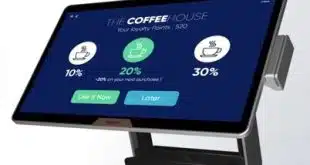Demand from corporate clients?combined with a deadline that's only five months away–is a major factor pushing banks into check imaging, according to a top executive with one major supplier of check-processing software. Although many banks are poised to begin accepting so-called image replacement documents when the Check Clearing for the 21st Century (Check 21) Act goes into effect in October, there has been less urgency in generating and sending IRDs, according to Royce D Brown, president and chief operating officer at NetDeposit Inc. Salt Lake City, Utah. IRDs are printouts of check images that, under Check 21, will carry the same legal effect as the paper originals. By making IRDs legal instruments, the new law is widely seen as encouraging check imaging, since banks could send images to printing facilities close to paying banks to cut transit costs and float time. Corporate clients, including major retailers, see significant advantages in sending images of their checks, chief among them cost savings and the ability to deal with a single bank anywhere in the country rather than multiple banks strategically located to minimize float time. “Corporations are saying, 'I want this,” says Royce D. Brown, president and chief operating officer of NetDeposit Inc., Salt Lake City, Utah. Banks, he says, are beginning to get the message, but perhaps not as fast as corporate clients would like. “It's not the same as the panic I see with corporations where they're saying, 'I've got to have it,'” he says. Retailers, he predicts, will begin by imaging the checks they accept in back offices at their stores but will eventually move the process out to scanners installed in checkout lanes. Also looming large is the Oct. 28 effective date for Check 21, which is creating an increasing sense of urgency among banks that don't want to be left behind as competitors gear up to take advantage of the law. “Bankers need a deadline,” says Brown. “The industry needs a deadline to focus on making these changes [for imaging]. Next year you'll see significant infrastructure changes [among banks].” Estimates vary on the investment required among banks to enable their back offices to create and send images that could be accepted by paying banks as images or IRDs, but some experts say it can run into tens of millions of dollars for some institutions. Research by Celent Communications predicts banks will spend $1.9 billion annually on imaging and image exchange by 2005. Check 21 does not mandate image exchange, but banks that join image-exchange networks or that establish prior agreements among themselves may trade images as well as IRDs.
Check Also
The Youngest Adults Favor BNPL Over Credit Cards, J.D. Power Finds
Generation Y and Generation Z are the biggest users of buy now, pay later, according …






